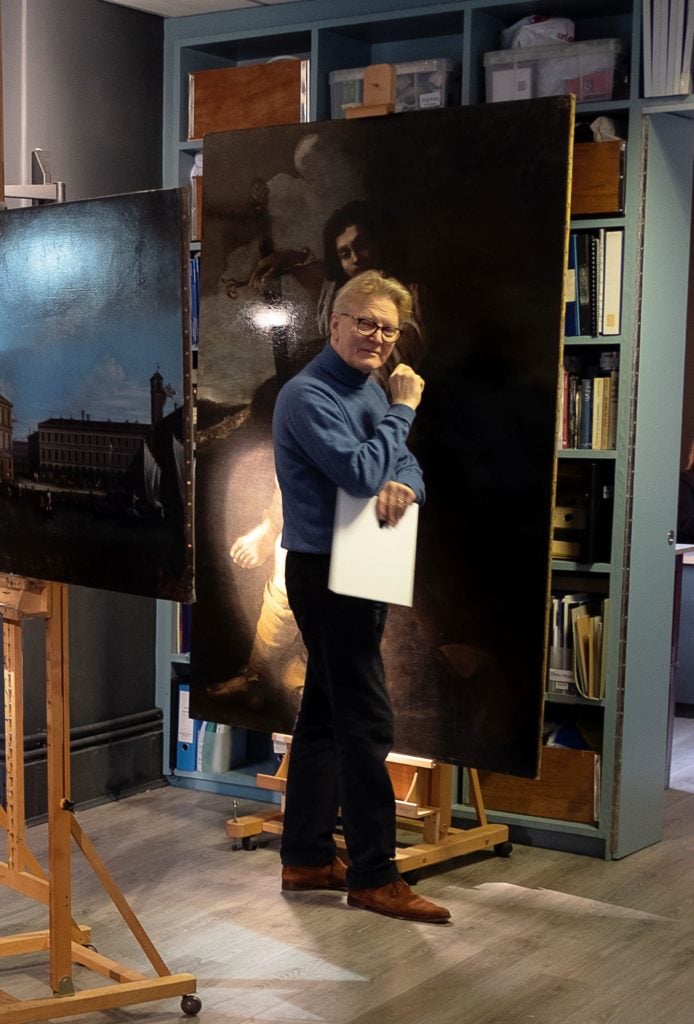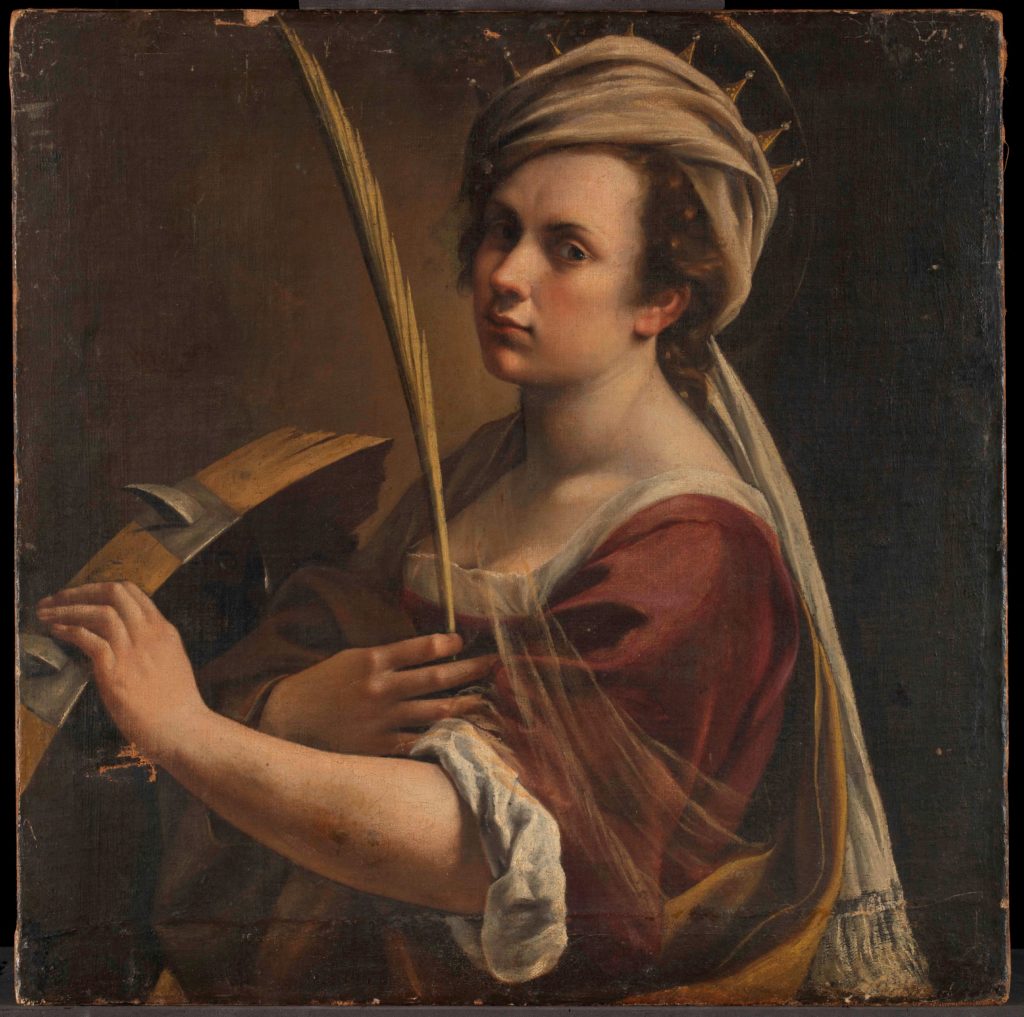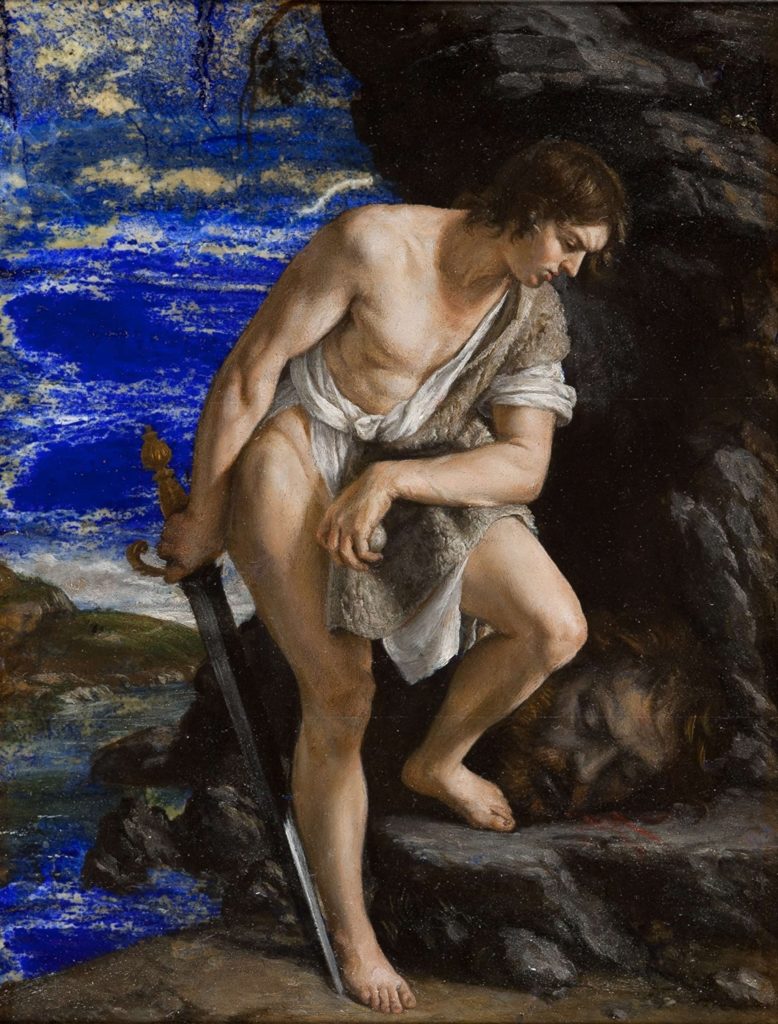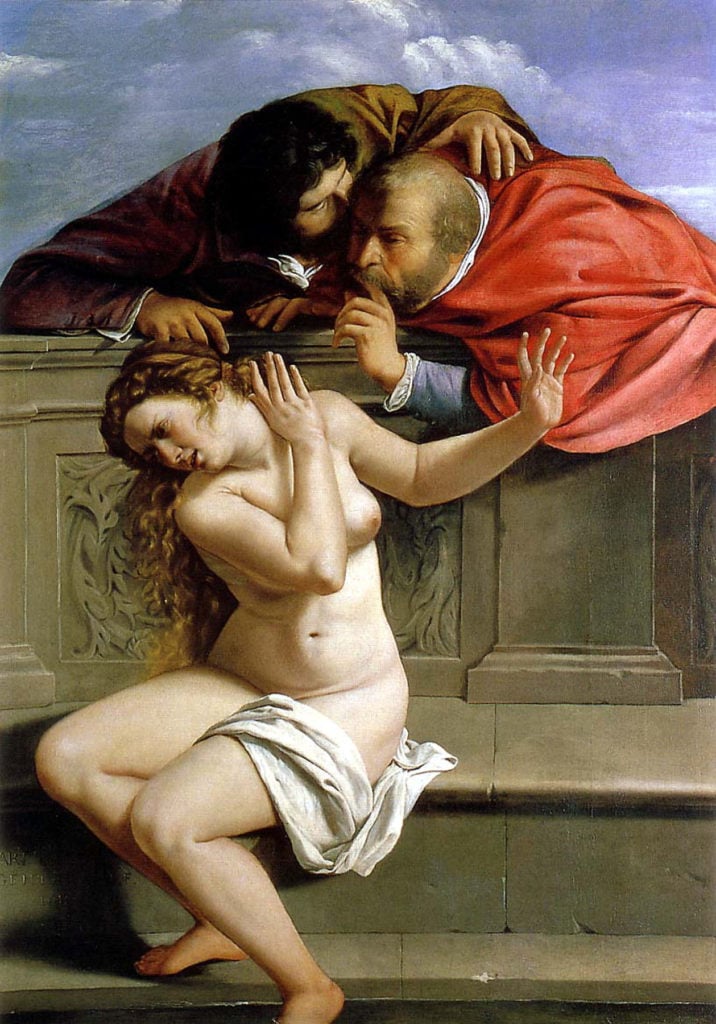A painting of David and Goliath newly hailed by experts as the work of Artemisia Gentileschi will, alas, not be a late addition to the National Gallery’s forthcoming first-ever exhibition celebrating the most famous Italian female artist of the 17th century.
But a conservation studio in London is stepping in to show the picture anyway.
Scholars and the public will be able to see (around 1639) by appointment in the studio of Simon Gillespie, who painstakingly removed layer upon layer of dirt, varnish, and overpainting to find he artist’s signature, long hidden on David’s sword.
The discovery confirmed a long-held argument by the art historian Gianni Papi that the work is by Gentileschi. Papi and Gillespie announced their findings in this month’s edition of the .

Simon Gillespie in the studio with Artemisia Gentileschi’s . Image courtesy Simon Gillespie Studio
Why the Painting Won’t Be at the National Gallery
The UK-based owner of the painting, who wishes to remain anonymous, is, of course, delighted to have the work by Gentileschi, which he wants to put on long-term loan to an appropriate art museum.
“I think it would be wonderful if the right public collection expressed an interest in placing it on public display, much as we would also love [for the painting] to be at home for a bit,” he says.
The National Gallery began planning its show around 16 months ago, after it acquired the artist’s in 2018, a £3.6 million ($4.5 million) purchase it clinched with remarkable speed, especially considering the question marks hanging over its provenance.

Artemisia Gentileschi, (circa 1615). Courtesy of the National Gallery, London.
Around 30 works are due to go on show alongside that painting next month, many traveling from Italy. (A spokesperson for the museum says it is in touch with lenders as “coronavirus is a rapidly changing situation.” It is following the advice of Public Health England and the Foreign Office.)
The owner of the newly attributed picture says he understands that the work may have been authenticated a little too late to make it into the show.
What’s more, the National Gallery has recently been under fire for the market boost it gave to the when it included the much-restored painting in its blockbuster 2011 Leonardo da Vinci exhibition. That decision has been described as a game-changer in elevating the painting’s value.

Orazio Gentileschi, , now thought to be a forgery. Courtesy of the Weiss Gallery.
The Other Gentileschi
The National Gallery’s decision not to include the new Artemisia Gentileschi work in the show contrasts with its enthusiasm in 2014 when it borrowed another newly discovered painting of the same subject: , which had just been attributed to Gentileschi’s father, Orazio.
That loan—once called “stunning” by Letizia Treves, the curator of the Artemisia Gentileschi show—is now suspected of being a modern fake.
The work passed through the hands of the French dealer Giulano Ruffini, who is now the subject of a European arrest warrant. (Vincent Noce, who first broke the news about the suspected Old Master forgery ring, has devoted a chapter of his forthcoming book to the dubious “Orazio Gentileschi.”)
Gillespie credits Papi with “recognizing an important Artemisia Gentileschi painting from a tatty old black-and-white photograph and being prepared to stake his reputation on that instinct.”
The conservator also pays tribute to the painting’s owner, who “took the plunge” when it came up for auction at Hemple Fine Art in Munich in December 2018, when it sold for €103,00 ($113,000).
“He got a very good deal,” Gillespie says. The auction record for a work by the artist has since soared to $5.2 million, a figure achieved at Arcuriel in Paris last November.
The owner of the painting only began collecting Old Masters around three years ago, focusing on 17th-century art—“an unfashionable market, often with a paucity of solid research,” he says.
But that meant he was able to “buy a great piece of art for a small fraction of some lauded contemporary 20th-century pieces.”

Artemisia Gentileschi, (1610–11). Courtesy of the Schloss Weißenstein collection, Pommersfelden, Germany.
Artemisia Gentileschi’s heroic life story has often colored the appreciation of her art.
Born in Rome in 1593, she was trained by her father. When she was just 17, she was raped by the painter Agostino Tassi, and then endured a trial in which she was held at fault.
In 1639, she and her father travelled to London from Italy, where he was employed by King Charles I. Papi believes that the recently rediscovered version of David and Goliath may have been the one owned by the king.
Source: Exhibition - news.artnet.com


